
Overview
The environmental monitoring industry focuses on assessing and analyzing various aspects of the environment to understand its health, identify potential risks, and track changes over time. This industry employs technologies such as sensors, remote sensing, and data analytics to monitor parameters like air quality, water quality, soil contamination, biodiversity, and climate conditions. Its applications range from ensuring compliance with regulations to supporting research, conservation efforts, and public health initiatives. The industry plays a crucial role in helping governments, organizations, and individuals make informed decisions to protect and sustainably manage natural resources and ecosystems.
Depending on specific features and functions, GAO Tek’s Carbon dioxide gas detectors are sometimes referred to as carbon dioxide gas monitoring devices, carbon dioxide gas detection systems, carbon dioxide gas sensors, carbon dioxide detection equipment, carbon dioxide gas alarms, carbon dioxide monitoring instruments, carbon dioxide gas analyzers, carbon dioxide safety detectors, carbon dioxide gas alert systems, and carbon dioxide concentration monitors.
Furthermore, GAO Tek’s carbon dioxide gas detectors are further grouped into:
Alarm integrated, Data logging, Electrochemical, Handheld, High precision, Industrial, Non-dispersive infrared, Outdoor, and Rugged.
GAO Tek’s Carbon dioxide gas detectors have the following applications in the environmental monitoring industry:
- Indoor Air Quality Monitoring: GAO Tek’s carbon dioxide gas detectors are used to assess indoor air quality in buildings, offices, schools, and other enclosed spaces. Elevated levels of CO2 can indicate poor ventilation, which can lead to discomfort, health issues, and reduced productivity. Monitoring CO2 levels helps ensure that indoor environments are healthy and conducive to human well-being.
- Greenhouse Gas Emissions Monitoring: In industrial settings, GAO Tek’s carbon dioxide gas detectors are employed to monitor and control emissions of greenhouse gases, particularly in facilities where combustion processes occur. By accurately measuring CO2 concentrations, industries can assess their environmental impact, track compliance with regulations, and implement strategies to reduce emissions and mitigate climate change.
- Environmental Research: GAO’s carbon dioxide gas detectors are used in scientific research to monitor CO2 levels in various environments, including forests, oceans, and urban areas. This data helps researchers understand carbon cycling, greenhouse gas dynamics, and the impacts of human activities on the environment. For example, our carbon dioxide gas detectors are deployed in forest ecosystems to study carbon sequestration and deforestation effects.
- Occupational Health and Safety: In industries such as breweries, wineries, and food processing plants, where CO2 can be produced or released during fermentation or other processes, detectors are used to ensure worker safety. GAO Tek’s carbon dioxide gas detectors can alert workers to potentially hazardous levels of the gas, preventing accidents and ensuring compliance with workplace safety regulations.
- Volcanic Monitoring: GAO Tek’s carbon dioxide gas detectors are utilized in volcanic monitoring to detect changes in volcanic gas emissions, including increases in CO2 levels. Monitoring CO2 emissions can provide early warning signs of volcanic activity, aiding in volcano surveillance and hazard assessment.
- Carbon Capture and Storage (CCS): In CCS projects, where CO2 is captured from industrial sources and injected underground for long-term storage, GAO Tek’s carbon dioxide gas detectors are used to monitor leakages and ensure the integrity of storage sites. Continuous monitoring helps prevent environmental contamination and ensures the effectiveness of carbon sequestration efforts.
- Aquaculture Monitoring: GAO Tek’s carbon dioxide gas detectors are employed in aquaculture facilities to monitor dissolved CO2 levels in water. Elevated CO2 concentrations can stress aquatic organisms, affecting their growth and survival. By monitoring CO2 levels, aquaculture operators can maintain optimal conditions for fish and other aquatic species, promoting healthy growth and minimizing environmental impacts.
- Climate Change Research: GAO’s carbon dioxide gas detectors are instrumental in climate change research to monitor atmospheric CO2 concentrations over time. Continuous monitoring from ground-based stations and satellites provides valuable data for understanding global carbon cycles, tracking trends in greenhouse gas concentrations, and assessing the effectiveness of climate mitigation efforts.
More information on carbon dioxide gas detectors and their applications in other industries can be found on
This category page lists related products
Systems in The Environmental Monitoring Industry Utilizing Carbon Dioxide Gas Detectors
Here are some popular systems in the environmental monitoring industry using carbon dioxide gas detectors:
Indoor Air Quality Monitoring System:
- AirThings Dashboard: AirThings Dashboard is a cloud-based software platform that integrates with carbon dioxide gas detectors to monitor indoor air quality in real time. It provides visualizations, alerts, and historical data analysis to identify trends and patterns in CO2 levels, temperature, humidity, and other parameters.
- TSI TrakPro Data Analysis Software: TrakPro software is designed for use with TSI carbon dioxide gas detectors to analyze and manage indoor air quality data. It allows users to generate customizable reports, track compliance with indoor air quality standards, and optimize ventilation strategies to improve occupant comfort and productivity.
Greenhouse Gas Emissions Monitoring System:
- Gasmet Gas Analyzer Software (Calcmet): Gasmet’s Calcmet software is used with Gasmet FTIR gas analyzers, including carbon dioxide gas detectors, for emissions monitoring and greenhouse gas quantification. It offers advanced data processing capabilities, including spectral analysis and calculation of emission factors, to accurately measure and report CO2 emissions from industrial processes.
- Vaisala Veriteq Continuous Monitoring System (CMS): Vaisala’s CMS software integrates with Vaisala carbon dioxide gas detectors and other environmental sensors to monitor greenhouse gas emissions in real time. It provides automated data logging, trend analysis, and customizable reporting features, enabling industries to track emissions, identify sources of CO2, and implement emission reduction strategies.
Environmental Research Monitoring System:
- Campbell Scientific LoggerNet Software: LoggerNet software is used with Campbell Scientific data loggers and carbon dioxide gas detectors for environmental research applications. It offers data visualization tools, statistical analysis, and data management features for monitoring CO2 concentrations in various research settings, such as forests, wetlands, and agricultural fields.
- RStudio: RStudio is an open-source integrated development environment (IDE) for R programming language commonly used in environmental research. Researchers utilize RStudio to analyze CO2 data collected from detectors, perform statistical modeling, and visualize results to gain insights into carbon cycling, ecosystem dynamics, and climate change impacts.
Carbon Capture and Storage (CCS) Monitoring System:
- CO2CRC Otway Project Monitoring Software: The CO2CRC Otway Project Monitoring Software is a specialized platform used in carbon capture and storage (CCS) projects. It integrates with carbon dioxide gas detectors deployed at CCS sites to monitor CO2 injection, migration, and storage. The software provides real-time data visualization, trend analysis, and risk assessment tools to ensure the safe and effective storage of captured CO2 underground.
- DNV GL CO2VERIFY Monitoring and Reporting Software: DNV GL’s CO2VERIFY software is designed for monitoring and reporting CO2 storage activities in CCS projects. It interfaces with carbon dioxide gas detectors and other monitoring equipment to track CO2 emissions, verify storage performance, and generate compliance reports for regulatory agencies and stakeholders.
Aquaculture Environmental Monitoring System:
- YSI AquaViewer Aquaculture Monitoring Software: YSI AquaViewer is a comprehensive software solution for aquaculture environmental monitoring. It integrates with carbon dioxide gas detectors and other water quality sensors to monitor CO2 levels, dissolved oxygen, pH, temperature, and other parameters in aquaculture facilities. The software provides real-time data visualization, alarm notifications, and historical data analysis to optimize water quality management and enhance fish health and productivity.
- AquaMaof Aquaculture Management System (AMS): AquaMaof’s Aquaculture Management System (AMS) is a software platform designed for integrated management of recirculating aquaculture systems (RAS). It incorporates carbon dioxide gas detectors along with sensors for monitoring water quality, feeding, and environmental conditions. The AMS provides advanced analytics, process automation, and remote monitoring capabilities to maximize operational efficiency and sustainability in aquaculture production.
GAO Tek’s targeted markets are North America, particularly the U.S. and Canada.
Complying With Government Regulations
GAO Tek’s carbon dioxide gas detectors comply or help our customers comply with U.S. government regulations such as:
- Occupational Safety and Health Administration (OSHA) Regulations
- Environmental Protection Agency (EPA) Regulations
- National Institute for Occupational Safety and Health (NIOSH) Regulations
- Department of Transportation (DOT) Regulations
- National Fire Protection Association (NFPA) Regulations
- Department of Labor (DOL) Regulations
- Food and Drug Administration (FDA) Regulations
- National Oceanic and Atmospheric Administration (NOAA) Regulations
- Federal Aviation Administration (FAA) Regulations
- Environmental Protection Agency (EPA) Regulations
GAO Tek’s carbon dioxide gas detectors comply or help our clients comply with Canadian regulations such as:
- Canadian Environmental Protection Act (CEPA) Regulations
- Workplace Hazardous Materials Information System (WHMIS) Regulations
- Canadian Occupational Health and Safety (OHS) Regulations
- Transportation of Dangerous Goods (TDG) Regulations
- National Energy Board (NEB) Regulations
- Canadian Nuclear Safety Commission (CNSC) Regulations
- Canadian Food Inspection Agency (CFIA) Regulations
- Health Canada Regulations
- Natural Resources Canada (NRCan) Regulations
- Environment and Climate Change Canada (ECCC) Regulations
Case Studies of Carbon Dioxide Gas Detectors in The Environmental Monitoring Industry
Carbon dioxide gas detectors are sometimes called carbon dioxide gas monitoring devices, carbon dioxide gas detection systems, carbon dioxide gas sensors, carbon dioxide detection equipment, carbon dioxide gas alarms, carbon dioxide monitoring instruments, carbon dioxide gas analyzers, carbon dioxide safety detectors, carbon dioxide gas alert systems, and carbon dioxide concentration monitors.
Here are some practical examples of using carbon dioxide gas detectors in the environmental monitoring industry:
A school district in Massachusetts implemented a comprehensive indoor air quality monitoring program using carbon dioxide gas detectors. The detectors were strategically placed in classrooms, auditoriums, and common areas to continuously monitor CO2 levels. Elevated CO2 levels were identified as indicators of poor ventilation, prompting adjustments to the HVAC systems and ventilation schedules. The program resulted in improved air quality, reduced absenteeism among students and staff, and enhanced learning environments.
A manufacturing plant in Ohio deployed carbon dioxide gas detectors as part of its greenhouse gas emissions monitoring program. The detectors were integrated into the plant’s emissions monitoring system to track CO2 emissions from various production processes. Real-time data from the detectors allowed the plant to identify sources of CO2 emissions, optimize production efficiency, and comply with regulatory requirements under the Clean Air Act. The monitoring program helped the plant reduce its carbon footprint and improve environmental performance.
A shrimp farming operation in Louisiana utilized carbon dioxide gas detectors to monitor water quality in its aquaculture ponds. The detectors were installed alongside other water quality sensors to measure dissolved CO2 levels, pH, temperature, and oxygen concentrations. Continuous monitoring allowed the farm to optimize feeding practices, manage stocking densities and prevent stress-related issues in shrimp populations. By maintaining optimal water quality conditions, the farm increased shrimp growth rates, minimized disease outbreaks, and improved overall production yields.
The Hawaiian Volcano Observatory (HVO) employed carbon dioxide gas detectors to monitor volcanic gas emissions on the Big Island of Hawaii. The detectors were deployed at various locations around active volcanic vents to measure CO2 concentrations in real time. Continuous monitoring of CO2 levels provided valuable insights into volcanic activity, including changes in gas emissions associated with magma movement and volcanic eruptions. The data collected by the detectors helped scientists assess volcanic hazards, issue timely warnings to the public, and support emergency response efforts during volcanic crises.
A forestry company in Oregon implemented a forest carbon sequestration monitoring program using carbon dioxide gas detectors. The detectors were deployed in forested areas to measure CO2 fluxes between the atmosphere and vegetation. By continuously monitoring CO2 levels, the company assessed the effectiveness of forest management practices in enhancing carbon sequestration. The data collected by the detectors informed sustainable forestry practices, such as selective logging and reforestation efforts, to maximize carbon storage potential and mitigate climate change.
The city of Atlanta, Georgia, deployed carbon dioxide gas detectors as part of its urban air quality monitoring network. The detectors were strategically placed in high-traffic areas, industrial zones, and residential neighborhoods to assess CO2 concentrations and other air pollutants. Real-time data from the detectors informed air quality management decisions, such as traffic management strategies, emission control measures, and urban planning initiatives. The monitoring program helped the city identify pollution hotspots, reduce exposure to harmful pollutants, and improve public health outcomes.
A power plant in Texas implemented a carbon capture and storage (CCS) project to reduce CO2 emissions from its operations. Carbon dioxide gas detectors were installed at the plant’s capture facility and injection wells to monitor CO2 capture, transport, and storage processes. The detectors provided real-time data on CO2 concentrations, ensuring the safe and effective capture and storage of CO2 underground. The CCS project helped the plant mitigate its carbon footprint, comply with environmental regulations, and support efforts to combat climate change.
Researchers in Alaska conducted permafrost carbon monitoring using carbon dioxide gas detectors in remote Arctic regions. The detectors were deployed to measure CO2 emissions from thawing permafrost soils, a significant source of greenhouse gas emissions in the Arctic. Continuous monitoring allowed researchers to quantify carbon release rates, assess permafrost degradation impacts on the climate system, and refine climate models. The data collected by the detectors contributed to our understanding of Arctic carbon dynamics and informed climate change adaptation strategies in high-latitude regions.
A property management company in Toronto implemented a comprehensive indoor air quality monitoring program in its office buildings. Carbon dioxide gas detectors were installed throughout the buildings to continuously monitor CO2 levels as an indicator of indoor air quality. Real-time data from the detectors allowed facility managers to assess ventilation effectiveness, identify areas with poor air circulation, and implement corrective measures. The monitoring program resulted in improved occupant comfort, reduced instances of sick building syndrome, and increased employee productivity.
An oil and gas processing facility in Alberta deployed carbon dioxide gas detectors as part of its greenhouse gas emissions monitoring program. The detectors were integrated into the facility’s emissions monitoring system to track CO2 emissions from various production processes. Real-time data from the detectors allowed the facility to accurately quantify its carbon footprint, identify emission reduction opportunities, and comply with regulatory requirements under Alberta’s Specified Gas Reporting Regulation. The monitoring program helped the facility reduce its greenhouse gas emissions intensity and improve environmental performance.
GAO RFID Inc. RFID Hardware, a sister company of GAO Tek Inc., is ranked as the top 10 RFID suppliers in the world. Its RFID, BLE, and IoT products have also been widely used in the environmental monitoring industry. Articles about related industries are given below:
Agriculture, Forestry and Fisheries Industry
Use of Carbon Dioxide Gas Detectors with Leading Software and Cloud Services in The Environmental Monitoring Industry
GAO Tek has used or has facilitated its customers to use GAO’s carbon dioxide gas detectors with some of the leading software and cloud services in their applications. Examples of such leading software and cloud services include:
- AirThings Dashboard
- TSI TrakPro Data Analysis Software
- Gasmet Gas Analyzer Software (Calcmet)
- Vaisala Veriteq Continuous Monitoring System (CMS)
- Campbell Scientific LoggerNet Software
- RStudio
- CO2CRC Otway Project Monitoring Software
- DNV GL CO2VERIFY Monitoring and Reporting Software
- YSI AquaViewer Aquaculture Monitoring Software
- AquaMaof Aquaculture Management System (AMS)
- CO2VerifyTM Cloud-Based Monitoring Platform
- Senseware Environmental Monitoring Platform
- Environics GasMix Software
- Siemens Sensor Intelligence Cloud
- Honeywell Industrial IoT Platform
GAO Tek’s carbon dioxide gas detectors and their applications in other industries are listed on
Other related products can be found in the
Meeting Customers’ Demands
Large Choice of Products
To satisfy the diversified needs of their corporate customers, GAO Tek Inc. and its sister company GAO RFID Inc. together offer a wide choice of testing and measurement devices, network products, RFID, BLE, IoT, and drones.
Fast Delivery
To shorten the delivery to our customers, GAO has maintained a large stock of its products and can ship overnight within the continental U.S. and Canada from the nearest warehouse.
Local to Our Customers
We are located in both the U.S. and Canada. We travel to customers’ premises if necessary. Hence, we provide very strong local support to our customers in North America, particularly the U.S. and Canada.
Furthermore, we have built partnerships with some integrators, consulting firms, and other service providers in different cities to further strengthen our services. Here are some of the service providers in the environmental monitoring industry we have worked with to serve our joint customers:
- ABB Ltd.
- Accenture
- Capgemini
- Cisco Systems, Inc.
- Cognizant
- Deloitte
- Emerson Electric Co.
- GE Digital
- HCL Technologies
- Honeywell International Inc.
- IBM Corporation
- Infosys Limited
- Johnson Controls International plc
- PwC (PricewaterhouseCoopers)
- Rockwell Automation, Inc.
- Schneider Electric SE
- Siemens AG
- Tata Consultancy Services (TCS)
- Wipro Limited
GAO has Many Customers in The Environmental Monitoring Industry
The products from both GAO Tek Inc. and GAO RFID Inc. have been widely used in the environmental monitoring industry by many customers, including some leading companies. Here is more information on applications of GAO RFID Inc.’s products in the environmental monitoring industry. Articles about related industries are given below:
Agriculture, Forestry and Fisheries Industry
Here are some of GAO’s customers in the environmental monitoring industry:
- 3M Company
- Aeroqual Limited
- Campbell Scientific, Inc.
- Environmental Sensors Inc.
- Fluke Corporation
- Gasmet Technologies Inc.
- Honeywell International Inc.
- HORIBA, Ltd.
- Sensidyne, LP
- Siemens AG
- Vaisala Corporation
- YSI
- ENMET Canada Ltd.
- MTECH Environmental
- NORR Systems
- SGS Canada
- Ecotech Canada
- PME Inc.

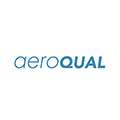



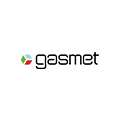



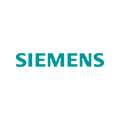

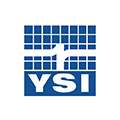


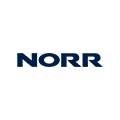



Contact Us
Here are GAO Tek’s Carbon dioxide gas detectors and they are further organized by feature:
Alarm integrated, Data logging, Electrochemical, Handheld, High precision, Industrial, Non-dispersive infrared, Outdoor, and Rugged.
If you have any questions about our products or want to place an order, our technical experts can help you.
Please Fill out this form or Email us.
